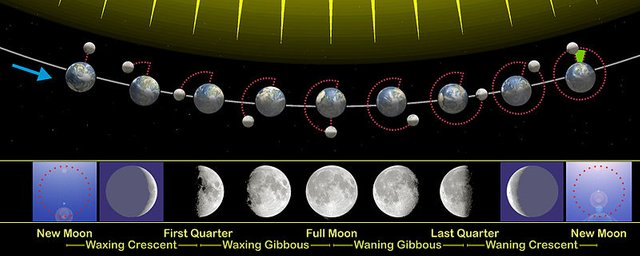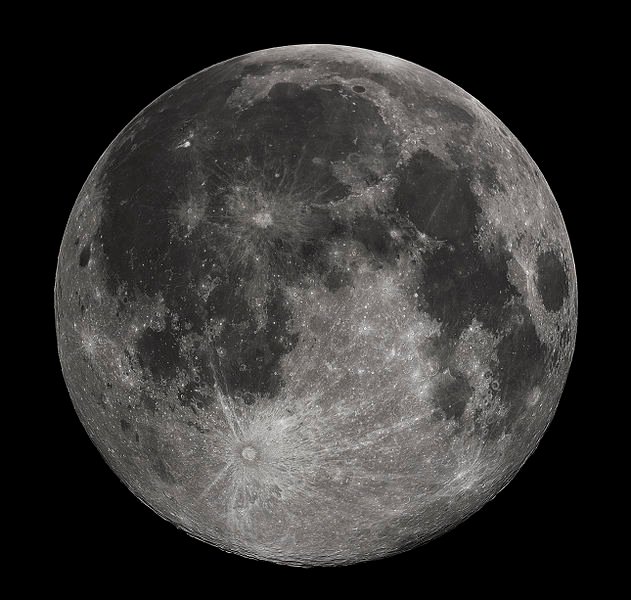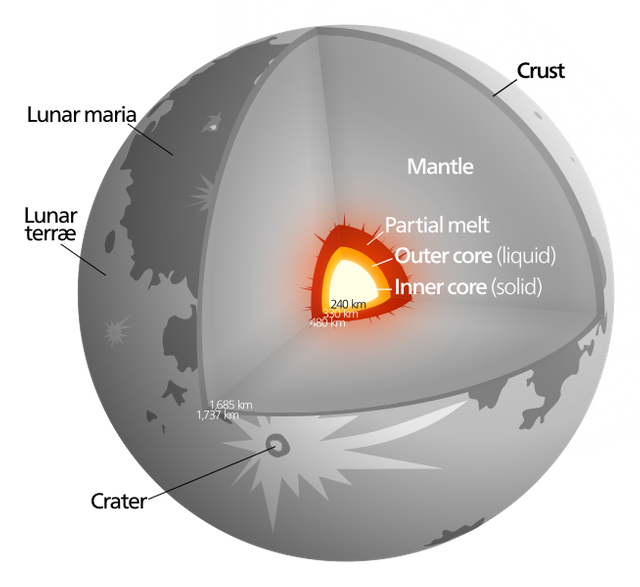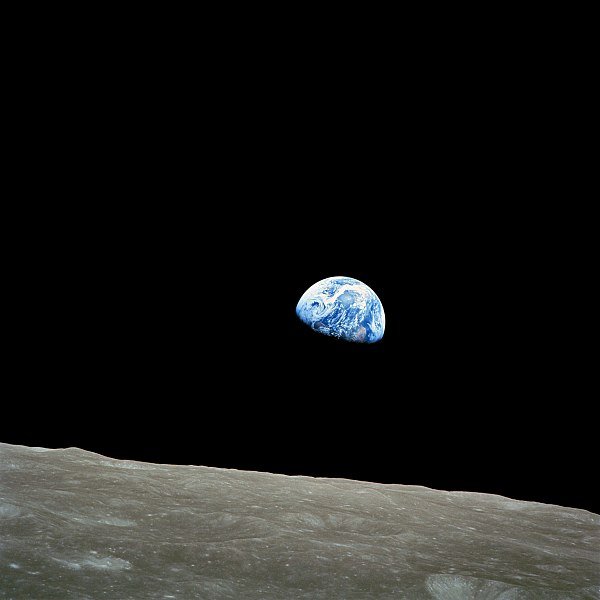Is the Moon Really Important? Or is it Just a Pretty Accessory That Decorates the Night Sky?
If you are like me that looks up the sky every now and then, whether the night sky is as a bright day, beaming with so many stellar activities, or when the night sky is pitch-black like vantablack; then you probably must have wondered “what’s is it like to be on the Moon? And I am also certain you must have wonder about a bunch of other things too, and probably, you must wonder what our world will be like without this bright pretty accessory that decorates our night sky almost every week.
In recent times, I have written a lot about Moons, especially the moons of gas giants like Jupiter, Saturn and the others. In my previous posts, I have explored the possibilities of those worlds ever being able to support life in the distant future, based on the resources they currently possess. And now that I think about it, I kind of feel bad that I never mentioned our Moon, despite the crucial role it played and continues to play in making the Earth habitable to support life.
And in today’s post, I hope to discuss what the Earth would’ve been like without the bright sphere that we have gotten so accustomed to. For one, the myths of werewolves, wouldn’t have existed, the life of Neil Armstrong would have been less exciting, and lastly, it will always be dark at night.
And in order to answer the question “What would we do without the moon” in an elevator pitch fashion, I will use the words of Professor Kaare Aksnes, a professor of Astrophysics in the University of Oslo.
In short, we would have less difference between high and low tides, shorter days and a more extreme climate,” he says
Our Moon is the fifth largest celestial satellite in our Solar System, and it remains the only place outside Earth that humans have set foot on, and it is by far the easiest object to find the night sky. The Moon remains Earth’s only naturally occurring satellite hovering over us, its phases have acted as a guide for humanity for thousands of years. And this guide is still what we use till today, the time it takes the moon to go from one full moon to the next, roughly equals to a calendar month.
It takes an estimated 27.3 days for the moon to make a complete orbit around Earth, and rotate on its axis. This makes the moon’s orbit mysterious to many, plus why it always shows us the same face. The moon reflects sunlight, and for this reason, we see a full moon, no moon (aka no moon) or the half moon; and much of it as a result of the moon’s position in relation to the Earth, and the Sun.
In terms of size, our moon is the fifth in the pecking order, behind Ganymede, Titan, Callisto, and Io, Europa the sixth biggest moon, behind Earth’s moon. Our Moon is 27% the size of size, which is ¼ or ratio (1:4) which is smaller than other planets and their naturally occurring moon, this translates that the moon is of great significance to the Earth, and it is one of the driving forces behind life here on Earth. The history of the moon is somewhat unclear, as there are various theories postulated by scientists and astronomers. Recently, some evidence indicates that that the moon formed some 4.5 billion years ago, briefly after the formation of the Earth. The moon formed from the debris that was left over from the collision between Earth and a massive body called Theia (about the size of Mars).
This event is said to have occurred 95 million years, shortly after the formation of the Solar System. This theory of the formation of the moon is the most generally accepted version, mainly because the moon and Earth are both similarly composed. Other theories of the moon’s formation are that the moon fissioned out Earth, others say that Earth stole the moon from Venus.
The moon has a fascinating structure, as its core is quite tiny, in comparison to the rest of the moon’s structure; the core is estimated to be about 1-2% of the entire mass of the moon. The moon is mainly made of iron but also has a significant content of sulfur etc. The moon is a rocky world marked with craters created as a result of asteroids impact, craters that haven’t eroded due to the absences of weather. The surface of the moon is made up of oxygen - 43%, silicon - 20%, magnesium - 19%, Iron - 10% Calcium - 3%, amongst other compounds. It is reported that space orbiters have located traces of water on the surface of the moon that likely originated beneath the lunar surface.
The moon's atmosphere is similar to that of Mercury because it is lacking majorly in the possession of an elaborate atmosphere. So, the heat that reaches the surface of the moon during the day is lost at night due to the absence of an atmosphere. This results in varied temperatures in day and night time, the sunny side of the moon can get as hot as 273oC, and on the other side, the temperature can plunge to -153o
Some of the reasons why the Earth need the existence of the moon so desperately
Tides - It is believed that life on Earth started in the ocean and due to the gravitational pull of the moon, and this gravitational pull is as a result of the mass between the Earth and the moon, which helps in the formation of tides. Tides play a key role in the adaption of sea organisms to land, as there are various hypothesis that suggests that the quick tidal period is the origin of land life on Earth.
Tides are the rise and fall of sea levels caused by the combined effects of the gravitational forces exerted by the Moon and the Sun, and the rotation of Earth.
When higher tides recede, sea organisms are forced to survive for some time until the sea water level rises again. These organisms are left in holes within rocks or shallow ponds, in the near absence of water. This enabled them to develop mechanisms that will aid them to survive on land for a short period of time, before the water becomes available again, then this process repeats itself, and the organisms learned to survive without water for an extended period of time, and little by little, they adapted to surviving on land.
So in a way, the evolution of life here on Earth would have been quite different without the tidal pools that were formed as a result of the gravitational pull of Earth’s satellite.

Image by Orion 8 - Wikimedia Commons (CC BY-SA 3.0)
Prehistoric Source of Light (Lunar Cycle - With the technological advancement, the Earth has gotten a lot of artificial lighting, primarily due to man’s activities, and it may appear that we don’t really need the moon for a source of lighting. But, not until recently, the world usually is dark once the Sun sets, and moonlight was very important to the lives of living organisms, and a number of them are still sensitive to moonlight till this day. Vulnerable sea creators retreat to the depth of the ocean during a full moon, for the fear of being easily spotted by predators, can mainly come up during a new moon, when the environment is darker.
Also, over time, land animals in alignment with the lunar cycle developed a behavioural rhythm that determined the best time for certain activities such as the best time for hiding, hunting, when to sleep longer, or when to be awake much longer. The moon’s effect cannot be expressly explained in human biology, but its approximate coincidence with the female menstrual cycle is still in open debate. But as a source of lightning, it has been very instrumental over the course of history, artificial lightning of the past was limited to candles and torches, so people relied heavily on the moon when planning long-range travel as they aim to take advantage of the full moon for safe travel. It was also resourceful in warfare as battles were planned with visibility in mind, as to when to attack, and defend.
Other ways the moon affects Earth is by stabilizing the Earth’s rotation. And if the moon was absent in the Earth’s life, Earth will lack a stabilizer might tilt all the way over and rest on its side in relation to the orbit around the Sun. And the effects of one side of the Earth facing the Sun will result in extreme temperatures and daylight for a protracted period of time, which may be yearly. We can take a cue from Earth’s sister planet - Mars, Mars doesn’t have a moon to stabilize its tilt, the Martian atmosphere and climate have experienced extreme changes over the course of time.



This post has been voted on by the steemstem curation team and voting trail.
There is more to SteemSTEM than just writing posts, check here for some more tips on being a community member. You can also join our discord here to get to know the rest of the community!
Hi @agbona!
Your post was upvoted by utopian.io in cooperation with steemstem - supporting knowledge, innovation and technological advancement on the Steem Blockchain.
Contribute to Open Source with utopian.io
Learn how to contribute on our website and join the new open source economy.
Want to chat? Join the Utopian Community on Discord https://discord.gg/h52nFrV
This is definitely a good read. Just don't really know too much about the moon and it feels like you're a moon specialist. Look forward to seeing more posts from you, @agbona
Many thanks buddy for the feedback
Specialist? I don't work for NASA bro, I am an enthusiat at best.
I am just facinated about celestial satellites, and personally, I believe they have a better chance of supporting life than any other planet in the Solar System.
Thanks for reading through though, I hope you learnt something.
Of course, I learnt something... You need a list of 'em... Lol